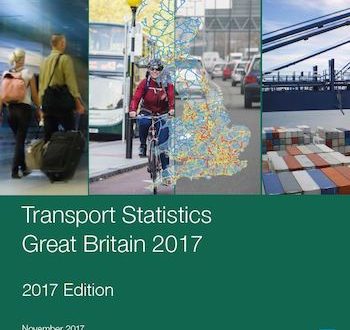Although there are pockets of growth, including in London, the latest travel stats from the Department for Transport show that cycling remains stuck on 2 percent modal share nationally.
Travel by car remains the default mode of transport, with a 62 percent modal share. In 2016, total motor vehicle traffic in Great Britain reached a new record level: 324 billion vehicle miles travelled, a 2.2 percent increase from 2015. Congestion on A-roads has increased by 2.8 percent.
Walking and cycling trips have declined since 2002. The trend in cycling has been "mixed since 2007", says the DfT report, because while use has been flatlining for some years the number of miles cycled has risen: the average distance people cycled in 2016 was 53 miles, 37 percent greater than in 2002. 42 percent of people in England aged 5 or over own a bicycle.
58 percent of adults in Cambridge cycled at least once a month, the highest rate in the country.
102 cyclists died in 2016. Such fatalities have remained between 100 and 118 since 2008. The most dangerous mode of travel is motorcycling. The fatalities per billion passenger kilometres for motorcycling are 83. The next most dangerous mode is walking at 26 and then cycling at 24. Motoring suffers 2 fatalities per billion passenger kilometres but travelling by air or by train is so statistically safe that the DfT gives the totals as 0.
According to the DfT’s statisticians, a whopping 81 percent of car drivers exceed 20mph speed limits and 53 percent break 30mph speed limits. More than 70 percent of lorry drivers break the speed limit on 20mph roads, and about 50 percent do so on 30mph roads.
Transport Statistics Great Britain (TSGB) is the Department for Transport’s main statistical compendium publication. It describes the major statistical trends in the transport sector.
The cycling and walking stats are broken down into:
- Proportion of residents who do any walking or cycling at least once per month by local authority
- Where usually cycled in the last 12 months
- Bicycle ownership by age
- Average distance travelled by age, gender and mode
- Trips to and from school per child per year by main mode
- Average number of trips (trip rates) by main mode
- Reported killed or seriously injured casualties by road user type
- Proportion of how often and how long adults cycle for, by local authority
- Proportion of how often and how long adults walk for (at least 10 minutes), by local authority
- Average number of trips (trip rates) by age, gender and main mode
- Average minimum travel time to reach the nearest key services by mode of travel
- Vehicles involved in reported accidents and involvement rates by vehicle type and severity of accident
- Social attitudes: it is too dangerous for me to cycle on the roads
- International comparisons of road deaths, number and rates for different road users by selected countries
- Walking and cycling levels – demographic breakdown
58 percent of domestic transport greenhouse gas emissions were from cars and taxis,
Emissions from international aviation have more than doubled since 1990. Domestic and international aviation now contribute 22 percent of total transport emissions.
The UK has been stuck on 2 percent modal share for cycling for decades, but as @lastnotlost points out, there are some bright spots in the DfT’s latest statistics. Using data from Transport for London, the DfT footnotes show that cycling is increasing fast in London and is well on the way to overtaking the use of private cars. Cycling has been growing in London since at least 2003.
 BikeBiz Bicycle and cycling retail news
BikeBiz Bicycle and cycling retail news




